Joan Armatrading
There weren't many female singer-songwriters on the radio (and especially the charts) in the 1970s—you could count them pretty much on two hands. That said, it's only mildly surprising that this LP made it about halfway up the U.S. charts (and did much better in the U.K.). The songs are so well written, the style so warm and appealing that radio just had a hard time ignoring them. "Down to Zero," "Love and Affection," and "Help Yourself" are witty, smart observations of human relations, showcasing Armatrading's sure vocal style and adventurous folk-pop sensibilities. Like Roberta Flack's "The First Time," Armatrading's "Somebody Who Loves You" is a deeply-felt and moving love song, and "Save Me" is a painful and private moment the listener almost feels guilty for overhearing. This is a milestone album in Armatrading's oeuvre. —Lorry Fleming
Lester Young Romping changed
Gilbert & Sullivan: The Gold Collection
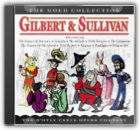
At its best, the D'Oyly Carte Opera Company preserved traditions of singing Gilbert and Sullivan which had developed over many years of performances—and employed some wonderful singers for its productions. This compilation comprises material recorded between 1960 and 1973, when the company was still very strong and is a glorious testament to its achievements. And the great singers are well represented— John Reed, perhaps the most distinctive voice of the company for many years, can be heard displaying his comic genius as the Lord High Executioner, The Learned Judge, Sir Joseph Porter and others; a youthful Valerie Masterson shines as Yum-Yum and Mabel; and Gillian Knight and Lyndsie Holland give hilarious renditions of those terrible creatures known as Gilbertian Contraltos. Of course these are just highlights, so G&S fans will undoubtedly have a favourite moment which is not represented—but the two discs run very generously at 69 and 74 minutes respectively, so there is plenty to enjoy. (A one-disc compilation can be found on The World of Gilbert and Sullivan.) There is one minor drawback: the recording levels vary between tracks, so keep your finger on the volume control! —Warwick Thompson
Olivier Messiaen: Turangalîla-Symphonie; Quatuor pour la fin du temps
Handel: Water Music; Music for the Royal Fireworks

There's no dearth of fine recordings of these works on the market, but this recording goes straight to the top of the list. Kevin Mallon leads a Toronto-based, 34-person-group of period instrumentalists called the Aradia Ensemble: it's a terrific, ear opening show. The music is, above all, joyful, with dance movements galore and plenty of giddy pomp. Mallon has rethought the tempi, almost all of which, he feels, should be quicker than we're accustomed to hearing. These tempi work most of the time, and if, for example, you overlook the fact that at his tempi, the alla hornpipe of the Water Music Suite No. 2 and the Rigaudon of No. 3 could only have been danced by a dancer on speed, and just listen to how effortlessly entertaining the music is, you'll love it. He's not rigid in his fleetness, however—the final movement of Water Music Suite No. 1 is relaxed and he slows it down even further for its last few seconds, giving it the stature it requires.
Mallon also adds side-drum and tambourines to a couple of the movements, and they add jollity and jauntiness; only a whiner would object. When the trumpets and horns ring out they don't blare and say, in La Paix from the Royal Fireworks Music, when he uses transverse flutes (as suggested in the original manuscript but never before recorded that way), the effect is magical, rather than just mellow. Try the overture of the Royal Fireworks, with brass blasting, drums being banged with wooden-headed sticks, but all at a military tempo that implies forward propulsion rather than combative stodginess. This is both a bargain and a terrific reading. —Robert Levine
Super Trouper
ABBA
24bit digitally remastered digipak edition with extensive liner notes, lyrics and includes two bonus songs: 'Elaine' and 'Put On Your White Sombrero'.
X&Y
Coldplay
Coldplay Photos
More from Coldplay
A Rush of Blood to the Head
Parachutes
Live 2003
Viva La Vida
Coldplay
Extremely limited special edition of their 2008 album packaged in a gatefold wallet sleeve. Viva La Vida is the Britpop act's fourth studio release. The album comprises 10 brand new tracks, recorded in London, Barcelona and New York with producers Brian Eno and Markus Dravs. Viva La Vida follows the hugely successful album X & Y, which has sold 10 million copies since its release in 2005. EMI. 2008.
Life for Rent
Dido
Despite its somewhat polite, trip-hoppy surface, Dido Armstrong's music frequently rests on a melancholy that can only be called courageous in the current pop world. Few singer-songwriters with 12 million record sales behind them would offer a single such as Life for Rent's "White Flag," which is in part an apology for the "mess and destruction" the narrator has left with her lover. Emotions are even stickier on other tracks, with Dido's Dusty-ish voice coolly sweeping through "Don't Leave Home," one of the creepiest codependent-love songs since "Every Breath You Take," and in "Who Makes You Feel," ticking off a list of reasons why an affair is dying, while also admitting that she still loves the guy. It's a hard-won romanticism, too, that pokes its head up in the tough-minded "This Land is Mine" and "Do You Have a Little Time" ("I'd like to hold you still/Remind you of all you've missed"). A knotty and rewarding album. —Rickey Wright
Safe Trip Home
Dido
(Amazon.co.uk Review) Safe Trip Home, the third album from singer-songwriter Dido, sees the chanteuse cook up a slightly different ambience than on previous albums No Angel (1999) and Life for Rent (2003). Though her signature elements remain in place—the limited, slightly cracked falsetto; the dreamy, comforting trip-hop vibe—there seems to be an extra density to Safe Trip Home, doubtless provoked by the loss of her father in 2006. The added weight is predominantly in the lyrics, which tend to focus on loss and heartache, but there's extra detail and depth in the musicianship too, since Dido has been busy honing her skills as a multi-instrumentalist. Despite the denser themes, the music still drifts by in classic Dido style, moving smoothly through the insouciant “Don't Believe in Love", the aptly titled “Quiet Times", and “Never Want to Say It's Love", before arriving at the somber-yet-elegant six-minute standout “Grafton Street", co-written with Brian Eno and featuring Mick Fleetwood on drums. The rest of the album unfurls in similarly sophicticated fashion, featuring the folkish “Look No Further", the upbeat “Us 2 Little Gods", and a nine-minute poetic closer called “Northern Skies". Put simply, Safe Trip Home is Dido in superlative form. —Danny McKenna
Day & Age
The Killers
Success came fast for The Killers, maybe too fast. The impossibly hooky “Mr Brightside” from their debut, coupled with faultless synth anthem “Somebody Told Me”, turned them into the most ubiquitous band in the world overnight and had them batting away Glastonbury headline offers before the Hot Fuss campaign was even over. Sam's Town followed all too quickly, trying to stylistically catch up with their status as stadium rock giants in waiting, but like their debut was really only carried by a couple of strong singles. Which would make this the perfect—or necessary—time to deliver the masterpiece the world expects. By shamelessly cherry-plundering the number 1 acts of the 80s not only have they managed to dramatically shunt the concept of filler from the record, but every track acts like it's performing last on Top Of The Pops circa 1987. Result. From the sparkling Pet Shop Boys obedience of “Human” to the massive Human League via Starship chorus of “Spaceman”, the Paul Simon’s Graceland as done by Talking Heads on “This Is Your Life” to the bang-on Cure desolation of “Goodnight, Travel Well” they barely put a foot wrong, though the saxophone ân’ steel drum funk of “Joy Ride” does momentarily test the patience. Their mission to become the next U2 continues apace and infiltrates most nooks on Day & Age, see especially Brandon’s very best Bono on “A Dustland Fairytale” and “This Is Your Life”. Third time lucky—they really do come very close to that masterpiece. —James Berry
Four Winds
Lightning Seeds
2009 release, the sixth album from Ian Broudie and his musical mates. Broudie has become the unsung hero of the UK music scene. A consistently innovative and inspiring songwriter, musician and producer, his depth of knowledge and experience has stretched to all areas of the industry. After taking a few years working away in a behind-the-scenes role, Ian's back with Four Winds. Using personal life experiences and reflecting on childhood memories, the album is a delicate, insightful and honest piece of work. The album is instantly recognizable as Lightning Seeds: exquisite pop melodies, now with an additional dose of heartfelt sentiment. 10 tracks including the single 'Ghosts'. Universal.
Harps & Angels
Randy Newman
Randy Newman's first studio album of all new material in nearly a decade is, by turns, hilarious, poignant and scathingly satirical. Harps and Angels often has an easy going Crescent City feel, with Newman on piano fronting a small combo and revealing, as Rolling Stone put it after the Carnegie Hall show, his serious love and study of the New Orleans piano tradition.
My Name Is Buddy
Ry Cooder
On My Name Is Buddy, Ry Cooder revisits, in a new set of original material, the sound and feeling of the "dust bowl songs" he first explored more than three decades ago on such groundbreaking albums as his self-titled 1970 debut and 1971's In The Purple Valley. In fact, he's joined by old friends like pianist Van Dyke Parks and drummer Jim Keltner who were with him at the start of his extraordinary, ultimately globe-spanning musical odyssey, which has yielded him six Grammy Awards to date, several more nominations, and perennial acclaim. My Name Is Buddy is also a journey, a phantasmagorical rendering in music, words and pictures of the travels of three unlikely cohorts - Buddy Red Cat, Lefty Mouse and Reverend Tom Toad - as they meander through the west "in the days of labor, big bosses, farm failures, strikes, company cops, sundown towns, hobos and trains...the America of yesteryear." For this allegorical tale, Cooder marshals all his remarkable skills as a producer, arranger, songwriter, soundtrack composer and musicologist. (The Christian Science Monitor recently dubbed him "a modern-day Alan Lomax.") My Name Is Buddy recalls Woody Guthrie's Bound for Glory - that is, if it had been enacted by the articulate animal characters of Walt Kelly's classic comic Pogo. Cooder conjures up the dark shadows of an earlier time to wryly comment on the political and social issues of the present. As back-story to his songs, Cooder has written short stories for each one and they're accompanied by evocative illustrations from noted San Antonio-based painter and muralist Vincent Valdez, all of which are included in a specially designed package.
I, Flathead
Ry Cooder
Ry Cooder’s I, Flathead, is the culmination of his ambitious and fascinating "California Trilogy," the last of three albums in which the singer and guitarist journeys through the real and imagined history of mid-20th century, multi-ethnic California, sampling the sounds of its barrios and byways, its nightclubs and honkytonks. He encounters the disenfranchised, the hopeful, the cheerfully strange and seriously nefarious, along with the occasional alien who races around in a souped-up flying saucer on the desert salt flats. On previous installments, Chávez Ravine (2005) and My Name Is Buddy (2007), learning the facts and stories behind Cooder’s songs made them even more compelling, whether it was the not-quite vanished legacy of the Chávez Ravine neighborhood of Los Angeles, bulldozed to make way for Dodger Stadium, or the allegorical, Bound For Glory-like adventures of Buddy Red Cat in a time of commie-baiting and union-busting. This time, however, no research is necessary: Cooder, a California native, has written a remarkable 104-page novella to accompany this disc, a surreally funny page-turner of a tale about itinerant musician Kash Buk and the various characters he meets in his travels out west, all of whom get to narrate parts of the story. If you mixed John Steinbeck with, say, Thomas Pynchon, and threw in a bit of Popular Mechanics for good measure, it might read something like the I, Flathead narrative.
Ministry of Sound: Chilled, Vol. 2 1991-2009
Various Artists
Pure Mania
The Vibrators
Pure Mania is a terrific relic of the punk era by a London band that owes much more to the Ramones than the Sex Pistols. Light on anger and nihilism but heavy on humor and fun, it's a blitz of twisted love songs ("Sweet Sweet Heart," Wrecked on You," etc.) with an ode to bondage thrown in for good measure. Label it music to shake your brains to. The Vibrators apparently thought they were playing pop music for the end of the decade (the '70s, that is), oblivious to the fact that the masses (especially in America) could never have been expected to catch on. That doesn't mean you shouldn't. —Mike Corrigan
Has Been
William Shatner
After his rendition of "Lucy in the Sky with Diamonds" on the infamous Golden Throats album (though it first appeared on the Transformed Man LP), one could argue that the world needed a new William Shatner album about as much as it needed a big-screen remake of TJ Hooker. But Shatner's back all the same with an intriguing, introspective collection of mostly spoken-word tracks that are all the more compelling when it becomes clear that Has Been is, in fact, no joke. Ben Folds played on and produced the record, creating rich, melodic, and varied pop musical backgrounds to Shatner's world-weary, boozy-suave yet thoroughly impassioned delivery. Joe Jackson, Aimee Mann, Henry Rollins, Brad Paisley, and Adrian Belew also stop by to lend their divergent talents. Highlights include the Rollins/Shatner rant "I Can't Get Behind That" and the Folds/Mann/Shatner collaboration "That's Me Trying", which tells the painful story of an attempted family reconciliation. Shatner mixes a healthy amount of self-awareness with a just a dollop of self-mockery and then combines it all with plenty of raw vulnerability to create an effect that is surprisingly touching, highly entertaining, and unlike any music you've ever heard. —John Moe
Amazon.ca Exclusive Footage
William Shatner was recently caught on tape by paparazzi responding to reports that some people hadn't yet heard his new album. See him read Amazon.com customer reviews of Has Been as he makes his case: high bandwidth, low bandwidth.
|
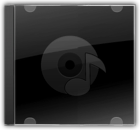
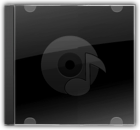
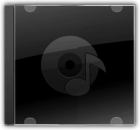
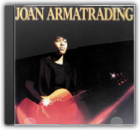
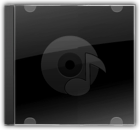
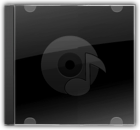
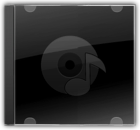
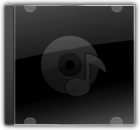
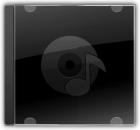
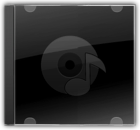
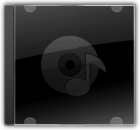
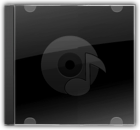

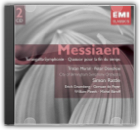

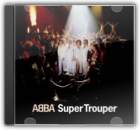

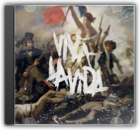

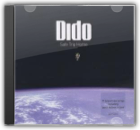
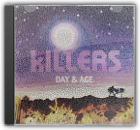
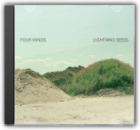
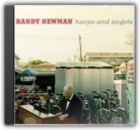
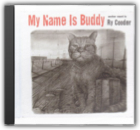
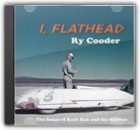
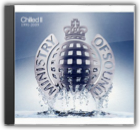
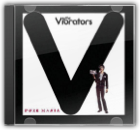
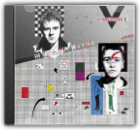
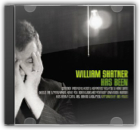


 Made with Delicious Library
Made with Delicious Library